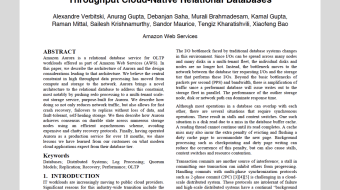Customer-obsessed science


Research areas
-
September 26, 2025To transform scientific domains, foundation models will require physical-constraint satisfaction, uncertainty quantification, and specialized forecasting techniques that overcome data scarcity while maintaining scientific rigor.
-
Featured news
-
NAACL 2024 Workshop on Bridging Human-Computer Interaction and Natural Language Processing2024When users want to write a story with a language model (LM) assistant such as ChatGPT, it is often very difficult to provide a prompt that clearly specifies all their interests. For the providers of LM assistants, it is also difficult to ensure their output stories come from a dataset without copyright concerns. Motivated by these limitations, we propose a coarse-to-fine (C2F) tree-based story generation
-
2024In task-oriented conversational-AI evaluation, unsupervised methods poorly correlate with human judgments, and supervised approaches lack generalization. Recent advances in large language models (LLMs) show robust zero-shot and few-shot capabilities across NLP tasks. This paper explores using LLMs for automated dialogue quality evaluation, experimenting with various configurations on public and proprietary
-
2024Digital assistants have become ubiquitous in e-commerce applications, following the recent advancements in Information Retrieval (IR), Natural Language Processing (NLP) and Generative Artificial Intelligence (AI). However, customers are often unsure or unaware of how to effectively converse with these assistants to meet their shopping needs. In this work, we emphasize the importance of providing customers
-
Diffusion models (DMs) can generate realistic images with text guidance using large-scale datasets. However, they demonstrate limited controllability on the generated images. We introduce iEdit, a novel method for text-guided image editing conditioned on a source image and textual prompt. As a fully-annotated dataset with target images does not exist, previous approaches perform subject-specific fine-tuning
-
AISTATS 20242024Crowdsourced machine learning on competition platforms such as Kaggle is a popular and often effective method for generating accurate models. Typically, teams vie for the most accurate model, as measured by overall error on a holdout set, and it is common towards the end of such competitions for teams at the top of the leaderboard to ensemble or average their models outside the platform mechanism to get
Collaborations
View allWhether you're a faculty member or student, there are number of ways you can engage with Amazon.
View all














































